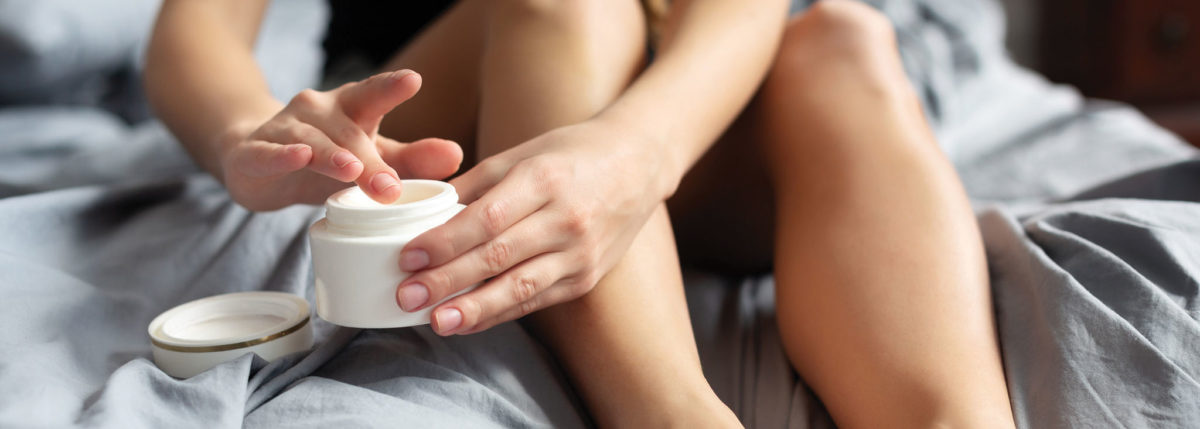Dry Skin and Type 2 Diabetes
You know managing type 2 diabetes means keeping your blood glucose within a certain range, but did you know your skin can be a tell-tale sign of high blood sugar? High blood glucose levels can affect many parts of your body, including your skin. It’s why doctors work to help you reach your glycemic goals. Fortunately, many of the conditions that high blood glucose levels can cause in the skin can be easily treated if they are detected early.
How Dry Skin Indicates High Blood Sugar
Hyperglycemia, or high blood sugar, occurs when glucose is trapped in the bloodstream due to a lack of insulin. The opposite of hyperglycemia is hypoglycemia.Hyperglycemia is one of the main causes of dry skin. When your blood glucose is high, the excess glucose leaves the body through urine. This can lead to dehydration and cause dryness on the skin.
There are other ways high blood glucose can contribute to dry skin. Consistently high blood sugars can lead to nerve damage and damage to the blood vessels. In this case, blood isn’t able to flow well throughout the body and leads to changes in the body’s collagen. Collagen helps your skin stay hydrated, elastic and heal properly. As you age, collagen levels decline. Nerve and blood vessel damage from high blood glucose, however, can disrupt collagen’s ability to keep your skin healthy.
Itching can be a symptom of irritated and dry skin. In addition to irritation, the skin can get worse when scratching it. When scratching, the risk of infection or developing ulcers can be increased. You have to be especially careful and try not to scratch, especially when bathing. The most common recommendation is to apply moisturizing lotion after bathing and use mild soap.
Diabetic Dermopathy: A Common Diabetes Skin Condition
Diabetic dermopathy is a condition that causes light brown, small, oval-shaped lesions, or dry patches on the skin. They’re most likely to be found on the shins but can occur anywhere on the body.
However, this condition is harmless. There’s no specific treatment for this condition, but, moisturizing regularly, particularly on the legs and knees, can help improve the appearance of some lesions.
Other Skin Conditions Related to Diabetes
Diabetic dermopathy and dried skin aren’t the only skin problems related to diabetes. Here are others to know:
Acanthosis nigricans: Characterized by darkened areas around the hands, knees, elbows and neck with a velvety feel.
Blisters: Also called bullosis diabetricorum or diabetic bullae, diabetic blisters can form on the hands, feet, legs and forearms. They’re typically not painful and usually go away on their own with no scarring, and are treated with improved blood glucose management.
Diabetic Ulcers: As a result of poor circulation and nerve damage due to high blood sugar for long periods of time, ulcers can form from wounds and sores that don’t heal properly. In addition to blood glucose management, one of the ways to prevent ulcers is to regularly examine your feet. Please see a doctor immediately if you notice slow-healing sores or ulcers forming.
Digital Sclerosis: This condition is characterized by hard, thickening and waxy skin on the fingers, toes, hands and sometimes the forehead and arms. The fingers can become stiff and become difficult to move. Digital sclerosis develops over a long period of time and can be an indication of other complications.
General Skin Care Tips
Along with managing type 2 diabetes well, here are some general skin care tips that may help you:
- Keep your blood glucose levels as close as possible to the goals your doctor has set.
- When blood glucose levels are high, the skin becomes dry and has more difficulty defending itself against bacteria.
- Keep your skin clean and hydrated by drinking water and moisturizing.
- Wear gloves when dealing with cleaners, detergents and abrasives.
- Avoid very hot baths. If you have dryness problems, avoid bubble baths. Don’t use creams or lotions between your toes because excessive humidity can increase the risk of fungus growth.
- Consult your doctor or a dermatologist on treating skin conditions, including the use of moisturizers and creams specifically for people with diabetes.
- Check your feet regularly. Learn how to conduct a foot exam yourself.
- Contact your doctor if you notice any cuts or injuries. Wash the area well with soap. Remember not to self-medicate. Your doctor is the one who will decide with you what is the best treatment.





